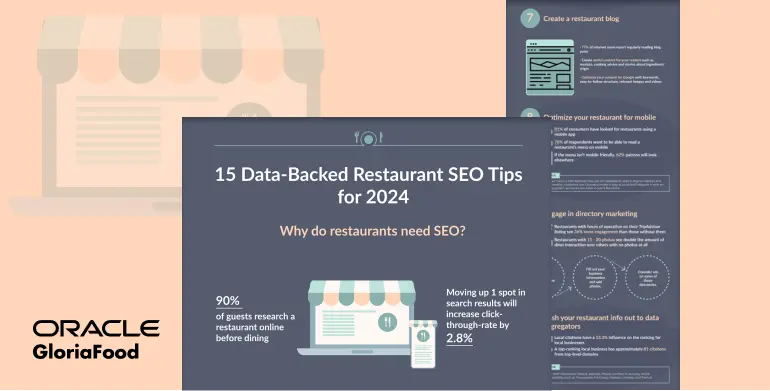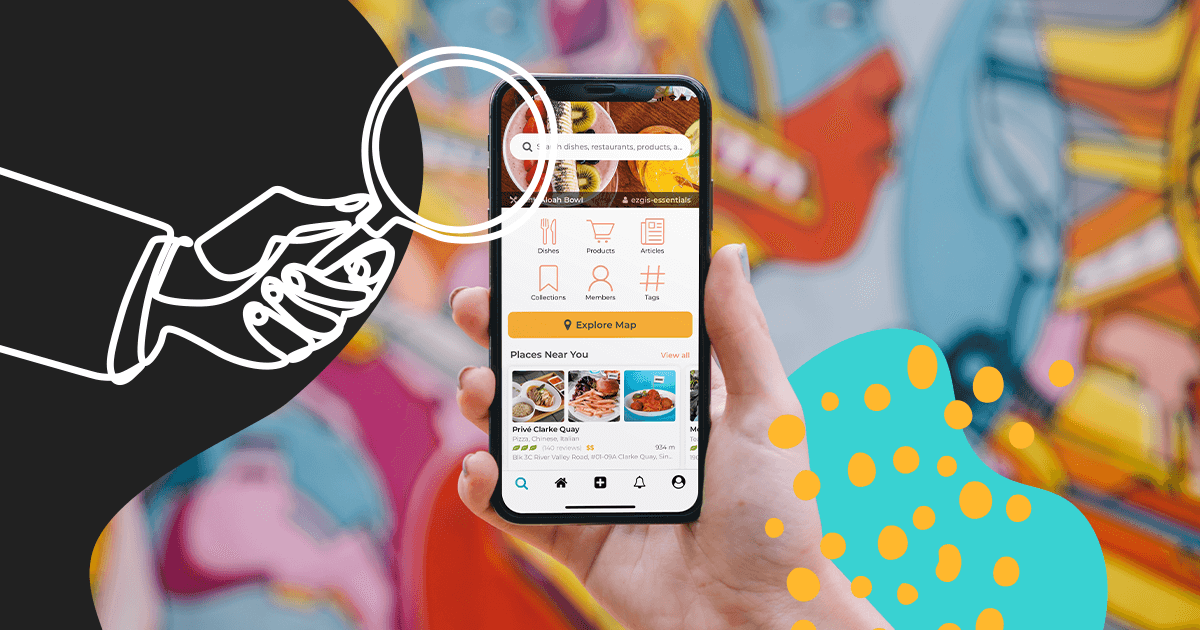Discover the secrets to dominating restaurant SEO and bringing more hungry diners through your doors with these expert tips!

Image courtesy of via DALL-E 3
Table of Contents
Introduction to Restaurant SEO
In today’s digital age, having a strong online presence is crucial for businesses, including restaurants. This is where Restaurant SEO comes into play. SEO stands for Search Engine Optimization, which is the process of optimizing a website to improve its visibility on search engines like Google. But what does this mean for restaurants?
What is SEO?
SEO is like a magic recipe that helps your restaurant’s website show up at the top of search results when someone types in keywords related to your business. By using specific words and phrases strategically throughout your website, search engines can better understand what your restaurant is all about and match it with the right search queries.
Why Do Restaurants Need SEO?
Imagine you’re craving a delicious meal and decide to search for restaurants nearby. If your restaurant doesn’t appear on the first page of search results, there’s a high chance that potential diners might not even know you exist. By implementing Restaurant SEO, you can attract more diners to your establishment and keep your tables full, ultimately boosting your business’s success.
Choosing the Right Keywords
When it comes to making sure your restaurant gets noticed online, choosing the right keywords is crucial. These are the words and phrases that people type into search engines like Google when they’re looking for a place to eat. By picking the best keywords, you can increase the chances of your restaurant showing up in search results and attracting more diners.
What are Keywords?
Keywords are the specific words or phrases that people use to find information online. In the case of your restaurant, these could be things like “best pizza in town” or “family-friendly restaurant near me.” When someone types these keywords into a search engine, you want your restaurant’s website to appear as one of the top results. Choosing the right keywords is like choosing the right ingredients for a delicious dish – it can make all the difference in how many people come through your doors.
How to Pick Keywords
So, how do you go about selecting the right keywords for your restaurant? Start by thinking about the things that make your establishment unique. Are you known for your mouth-watering burgers or your cozy atmosphere? Use these key characteristics to come up with a list of potential keywords. Put yourself in the shoes of someone looking for a place to eat – what would they type into a search engine to find a restaurant like yours?
It’s also important to consider the location of your restaurant. Including local keywords like the name of your city or neighborhood can help you show up in searches from people nearby. For example, if your restaurant is in Los Angeles, you might want to use keywords like “Los Angeles restaurant” or “best places to eat in LA.”
Lastly, remember that not all keywords are created equal. Some may be highly competitive, meaning that lots of other restaurants are trying to rank for them. Instead of going head-to-head with the big players, try to find niche keywords that are specific to your restaurant and less saturated. This can give you a better chance of standing out in search results and attracting the right kind of diners.
Optimizing Your Website
A mobile-friendly website is one that looks and works well on mobile phones and tablets. This is important because many people use their phones to search for restaurants. If your website is not mobile-friendly, it may be hard for them to see your menu or find your contact information.

Image courtesy of www.restaurant-website-builder.com via Google Images
Improving User Experience
User experience is all about making sure that visitors to your website have a good time while they are there. This means making it easy for them to find what they are looking for and navigate around your site. If your website is confusing or hard to use, people might leave and go somewhere else.
Using Local SEO Strategies
Local SEO strategies are crucial for restaurants to attract nearby customers looking for a place to dine. By optimizing your online presence for local searches, you can increase visibility and draw more diners to your establishment.
Google My Business
Google My Business is a powerful tool that allows restaurants to manage how they appear on Google Search and Google Maps. By creating or claiming your business profile, you can provide essential information like your address, phone number, hours of operation, and even photos of your dishes. This ensures that potential diners in your area can easily find you when they search for local dining options.
Encouraging Customer Reviews
Customer reviews play a significant role in local SEO. Positive reviews not only influence potential customers but also signal to search engines that your restaurant is a reliable and popular choice. Encourage satisfied patrons to leave reviews on platforms like Google, Yelp, and TripAdvisor. Responding to reviews, whether positive or negative, shows that you value customer feedback and can improve your restaurant’s reputation.
Creating Quality Content
When it comes to attracting diners to your restaurant, creating quality content is key. One way to do this is by writing food blogs and articles. These pieces can showcase your restaurant’s unique dishes, share recipes, and even highlight the stories behind your menu items. By providing valuable and engaging content, you can draw in more visitors to your website and ultimately, to your restaurant.

Image courtesy of rockcontent.com via Google Images
Engaging Video Content
Another effective way to captivate potential diners is through engaging video content. Videos allow you to visually showcase your food, your restaurant’s ambiance, and the passion behind your dishes. By creating mouth-watering videos that highlight your culinary creations, you can entice viewers to visit your restaurant and experience your offerings firsthand. Video content can be shared on social media platforms and on your website to further attract diners.
Social Media Integration
Social media is a powerful tool that restaurants can use to boost their online presence and attract more diners. By effectively integrating social media into your SEO strategy, you can increase engagement, encourage sharing, and drive more traffic to your website. Let’s explore some key ways to leverage social media for restaurant SEO.
Posting Regularly
Posting regularly on social media platforms like Facebook, Instagram, and Twitter is essential for maintaining a strong online presence. By consistently sharing updates, photos, and promotions, you can keep your followers engaged and informed about what’s happening at your restaurant. This not only helps to increase brand awareness but also encourages more people to visit your website and make reservations.
Engaging with Followers
Engaging with your followers on social media is crucial for building relationships and fostering loyalty. Responding to comments, messages, and reviews shows that you value customer feedback and care about their experience. By actively interacting with your audience, you can create a sense of community around your restaurant and encourage more people to visit and dine with you.
Monitoring and Analyzing Performance
Monitoring and analyzing performance is a crucial aspect of optimizing a restaurant’s online presence to attract more diners. By keeping track of how well your SEO efforts are working, you can make informed decisions to improve your website’s visibility and drive more traffic to your restaurant.

Image courtesy of www.thedallasseocompany.com via Google Images
Using Analytics Tools
One way to monitor your website’s performance is by using analytics tools. These tools provide valuable information about how many people are visiting your site, where they are coming from, and which pages they are viewing the most. Google Analytics is a popular tool that can help you track key metrics and understand how users interact with your website.
Making Improvements Based on Data
Once you have gathered data from analytics tools, it’s essential to use this information to make necessary improvements to your website. For example, if you notice that a particular page has a high bounce rate, meaning visitors leave the site shortly after landing on that page, you might need to improve its content or user experience. By analyzing the data and making informed changes, you can enhance your website’s performance and attract more diners to your restaurant.
Common Mistakes to Avoid
One big mistake many restaurant owners make is keyword stuffing. This means using too many keywords unnaturally in your website content. While keywords are important for SEO, overloading your text with them can actually hurt your website’s ranking. Instead, focus on using keywords naturally and providing valuable information to your readers.
Ignoring Mobile Users
Another mistake to avoid is neglecting mobile users. With more and more people using their smartphones to search for restaurants, having a mobile-friendly website is crucial. If your website is not optimized for mobile devices, you could be missing out on a large number of potential diners. Make sure your website looks and works well on phones and tablets to appeal to all customers.
Conclusion
In conclusion, mastering Restaurant SEO is crucial for the success of any dining establishment. By implementing the right strategies, restaurants can attract more diners and keep their tables full. Consistent efforts in optimizing the website, choosing the right keywords, integrating local SEO techniques, creating quality content, leveraging social media, and monitoring performance are essential for SEO success in the competitive restaurant industry.
-Profile-for-Your-Restaurant-01.webp)
Image courtesy of www.thedallasseocompany.com via Google Images
Remember, SEO is not a one-time task but an ongoing process that requires dedication and continuous improvement. By following the tips outlined in this guide and avoiding common mistakes such as keyword stuffing and neglecting mobile users, restaurants can enhance their online visibility and attract a steady stream of diners.
By prioritizing SEO efforts and staying up-to-date on the latest trends and best practices, restaurants can set themselves apart from the competition and establish a strong online presence that resonates with potential diners. Embrace the power of SEO and watch your restaurant thrive in the digital age!
Want to turn these SEO insights into real results? Seorocket is an all-in-one AI SEO solution that uses the power of AI to analyze your competition and craft high-ranking content.
Seorocket offers a suite of powerful tools, including a Keyword Researcher to find the most profitable keywords, an AI Writer to generate unique and Google-friendly content, and an Automatic Publisher to schedule and publish your content directly to your website. Plus, you’ll get real-time performance tracking so you can see exactly what’s working and make adjustments as needed.
Stop just reading about SEO – take action with Seorocket and skyrocket your search rankings today. Sign up for a free trial and see the difference Seorocket can make for your website!
Frequently Asked Questions (FAQs)
What is SEO?
SEO stands for Search Engine Optimization. It’s like a secret recipe that helps restaurants show up higher on search engine results when people search for something like “best pizza near me.” By using the right ingredients (keywords and phrases) on your website, you can attract more diners to your restaurant.
How can reviews help my restaurant?
Customer reviews are like word-of-mouth recommendations in the digital world. When potential diners see positive reviews about your restaurant, they are more likely to dine with you. These reviews can build trust and credibility, making your restaurant more attractive to new customers.







